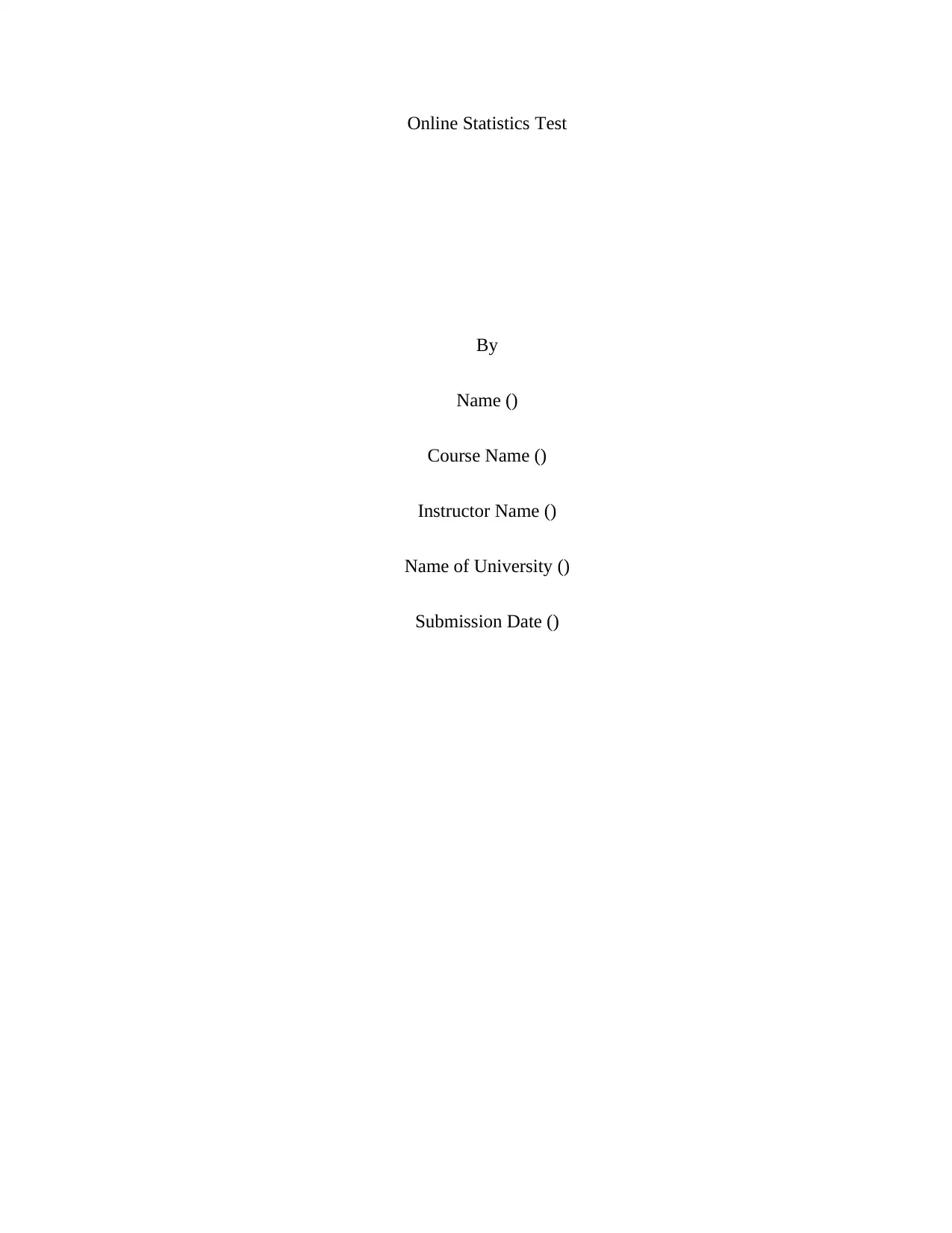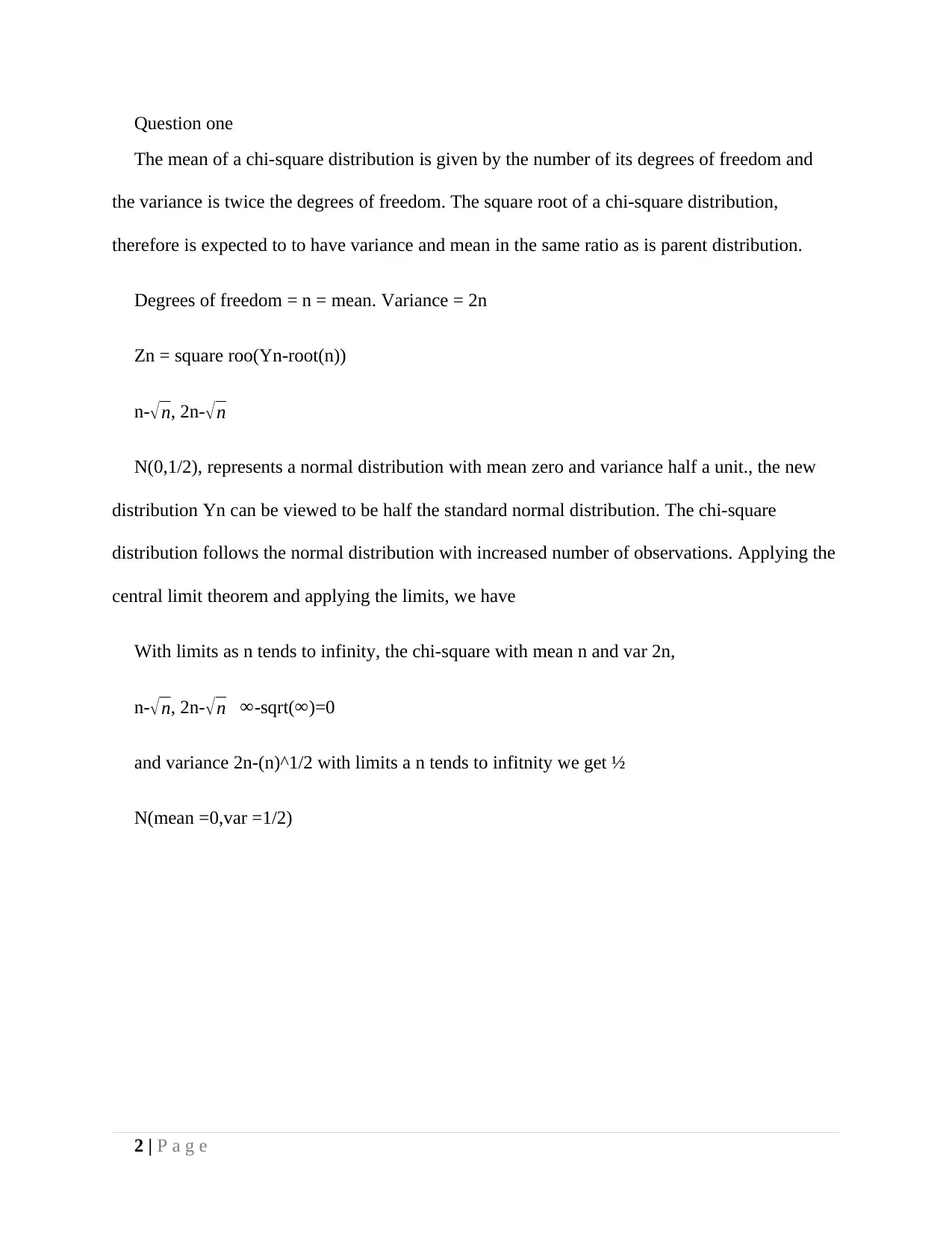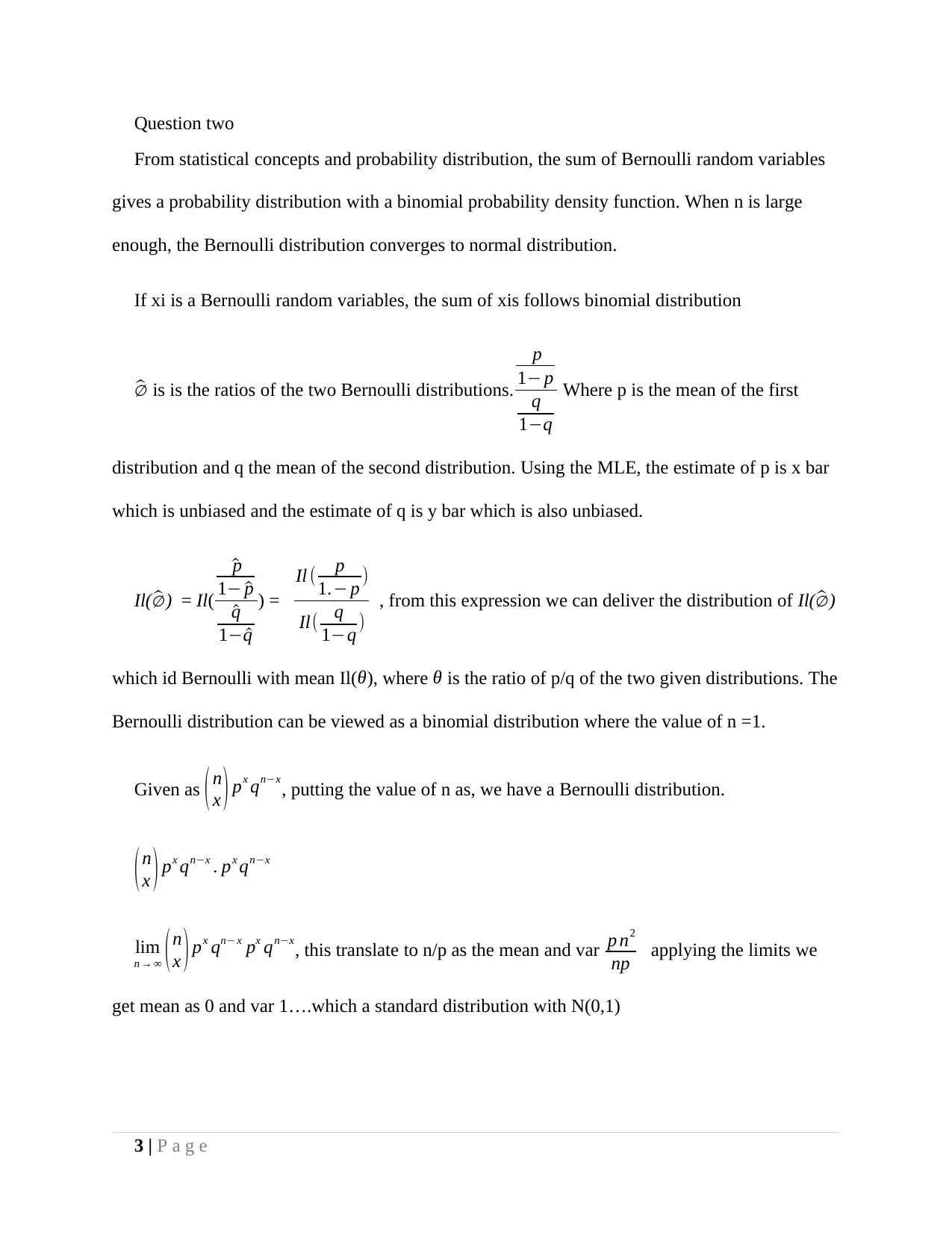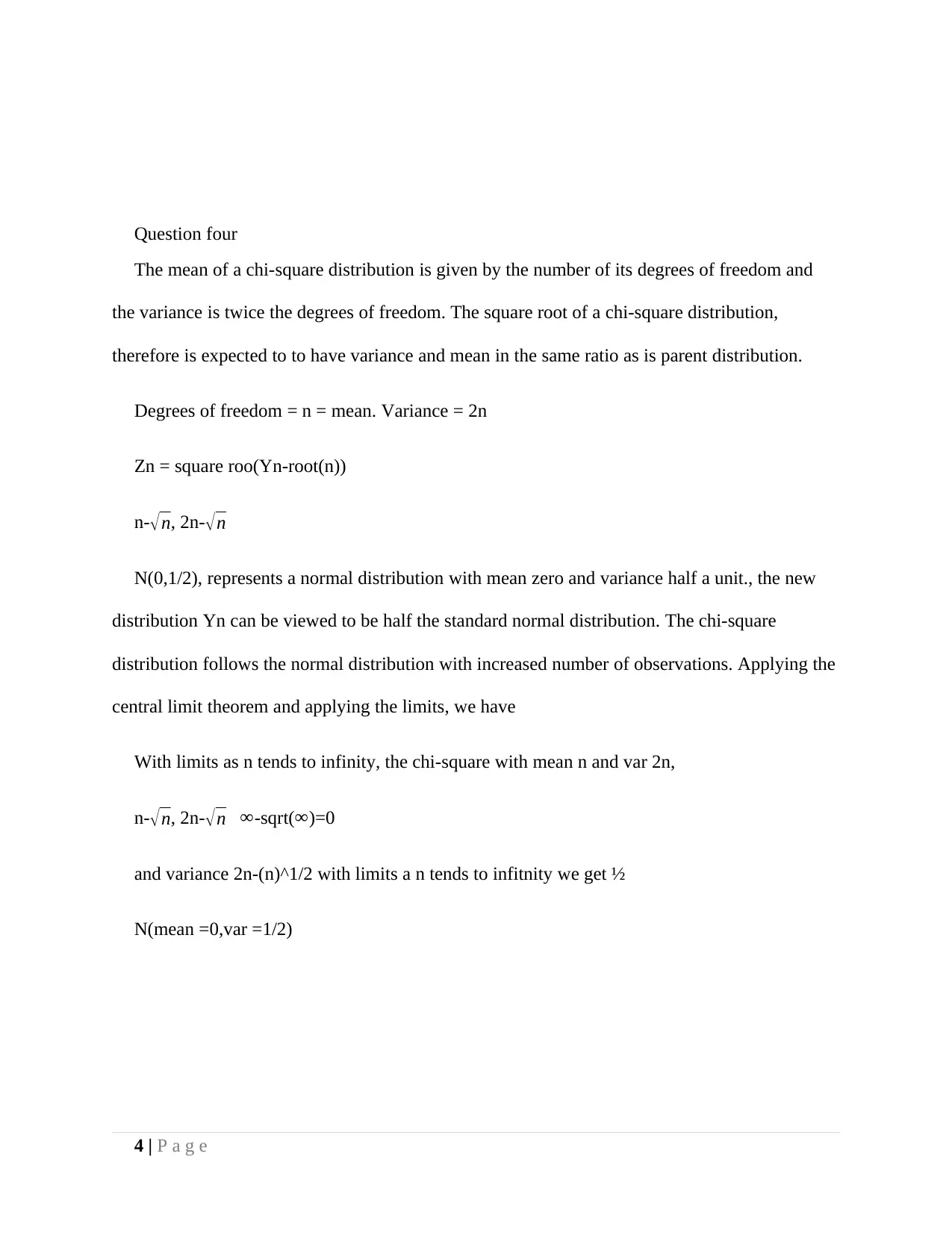Comprehensive Solution: Stat 6202 Midterm Exam on Probability
VerifiedAdded on 2022/08/29
|5
|611
|31
Homework Assignment
AI Summary
This document provides solutions to a Stat 6202 midterm exam, focusing on key concepts in probability and statistics. The solution covers topics such as the asymptotic normal distribution of a chi-square distributed random variable, maximum likelihood estimation (MLE) for Bernoulli distributions, and the derivation of asymptotic distributions for estimators. Specifically, it addresses the convergence of the square root of a chi-square distribution to a normal distribution, the properties of Bernoulli distributions, and the application of the central limit theorem. The solution also includes analysis of the Rayleigh distribution. Desklib offers a platform to explore more solved assignments and past papers for students.
1 out of 5








![[object Object]](/_next/static/media/star-bottom.7253800d.svg)